Ditapis dengan

Early Buddhist Transmission and Trade Networks :Mobility and Exchange Within …
This book examines catalysts for Buddhist formation in ancient South Asia and expansion throughout and beyond the northwestern Indian subcontinent to Central Asia by investigating symbiotic relationships between networks of religious mobility and trade.
- Edisi
- -
- ISBN/ISSN
- 9789004194588
- Deskripsi Fisik
- XVIII, 371 p.
- Judul Seri
- -
- No. Panggil
- 294.37209021 NEE e
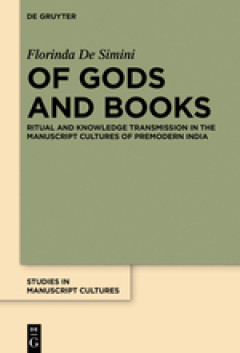
Of Gods and Books :Ritual and Knowledge Transmission in the Manuscript Cultur…
India has been the homeland of diverse manuscript traditions that do not cease to impress scholars for their imposing size and complexity. Nevertheless, many topics concerning the study of Indian manuscript cultures still remain to receive systematic examination. Of Gods and Books pays attention to one of these topics - the use of manuscripts as ritualistic tools. Literary sources deal quite ex…
- Edisi
- -
- ISBN/ISSN
- 9783110478815
- Deskripsi Fisik
- XI, 417 p.
- Judul Seri
- -
- No. Panggil
- 294.592 DES g

Transforming food systems for a rising India
This open access book examines India’s economic development, agricultural production, and nutrition through the lens of a “Food Systems Approach (FSA).” Despite economic progress, regional inequality, food insecurity and malnutrition persist. Simultaneously, recent trends in obesity and micro-nutrient deficiency indicate a future public health crisis. This book explores the challenges a…
- Edisi
- -
- ISBN/ISSN
- 9783030144098
- Deskripsi Fisik
- xxiv, 368p. : ill.
- Judul Seri
- -
- No. Panggil
- 363.85610954 TRA t
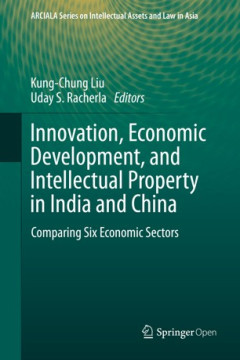
Innovation, economic development, and intellectual property in India and Chin…
This open access book analyses intellectual property and innovation governance in the development of six key industries in India and China. These industries are reflective of the innovation and economic development of the two economies, or of vital importance to them: the IT Industry, the film industry, the pharmaceutical industry, plant varieties and food security, the automobile industry, and…
- Edisi
- -
- ISBN/ISSN
- 9789811381027
- Deskripsi Fisik
- xvii, 514p. : ill.
- Judul Seri
- -
- No. Panggil
- 346.54048 INN i

Indic manuscript cultures through the ages. material, textual, and historical…
This collection of essays explores the history of the book in pre-modern South Asia looking at the production, circulation, fruition and preservation of manuscripts in different areas and across time. Edited by the team of the Cambridge-based Sanskrit Manuscripts Project and including contributions of the researchers who collaborated with it, it covers a wide range of topics related to South As…
- Edisi
- -
- ISBN/ISSN
- 9783110543100
- Deskripsi Fisik
- xviii, 783 p.; 22 cm.
- Judul Seri
- -
- No. Panggil
- 091 IND i
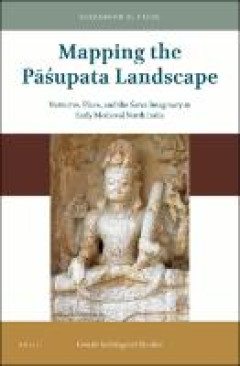
Mapping the pāśupata landscape :narrative, place, and the saiva imaginary i…
In Mapping the Pāśupata Landscape Elizabeth A. Cecil presents a spatial and material history of the Pāśupata tradition and examines the formation of a Śaiva religious landscape in Early Medieval India. Readership: All interested in the history of Hinduism, and particularly the worship of the god Śiva, in premodern India; scholars of early medieval history and society in South Asia, and th…
- Edisi
- -
- ISBN/ISSN
- 9789004424425
- Deskripsi Fisik
- XIII, 271 p.
- Judul Seri
- -
- No. Panggil
- 704.948945 CEC m
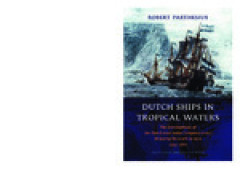
Dutch ships in tropical waters:the development of the Dutch East India Compan…
The end of the 16th century saw Dutch expansion in Asia, as The Dutch East India Company (the VOC) was fast becoming an Asian power, both political and economic. By 1669, the VOC was the richest private company the world had ever seen. This landmark study looks at perhaps the most important tool in the Company' trading - its ships. In order to reconstruct the complete shipping activities of the…
- Edisi
- -
- ISBN/ISSN
- 9789048501236
- Deskripsi Fisik
- 217 p. : ill. (some col.), col. maps ; 30 cm.
- Judul Seri
- -
- No. Panggil
- 387.50959809032 PAR d

Emerging market economies and financial globalization:argentina, brazil, chin…
In the past, foreign shocks arrived to national economies mainly through trade channels, and transmissions of such shocks took time to come into effect. However, after capital globalization, shocks spread to markets almost immediately. Despite the increasing macroeconomic dangers that the situation generated at emerging markets in the South, nobody at the North was ready to acknowledge the pro-…
- Edisi
- -
- ISBN/ISSN
- 9781783086740
- Deskripsi Fisik
- pages cm.
- Judul Seri
- -
- No. Panggil
- 330 STA e

Malarial subjects:empire, medicine and nonhumans in British India, 1820-1909
Malaria was considered one of the most widespread disease-causing entities in the nineteenth century. It was associated with a variety of frailties far beyond fevers, ranging from idiocy to impotence. And yet, it was not a self-contained category. The reconsolidation of malaria as a diagnostic category during this period happened within a wider context in which cinchona plants and their most va…
- Edisi
- -
- ISBN/ISSN
- 9781316771617
- Deskripsi Fisik
- xvi, 332p.: ill.
- Judul Seri
- -
- No. Panggil
- 616.936200954 DEB m

Excavations at Paithan, Maharashtra :transformations in early historic and ea…
This book reports on excavations at Paithan in India revealed the development of two early Hindu temples from the 4th century to the 9th: the key formative phase of Hinduism. The temples started as small shrines but were elaborated into formal temples. In relation to these changes, the excavations revealed a sequence of palaeobotanical and palaeofaunal evidence that give insight into the econom…
- Edisi
- -
- ISBN/ISSN
- 9783110653540
- Deskripsi Fisik
- XX, 386 p.
- Judul Seri
- -
- No. Panggil
- 956.94 KER e

Genealogy, archive, image :interpreting dynastic history in western India, c.…
The ethnographic approach to Indian history and genealogy; the making of dynastic history in the kingdom of Jhalavad; the history of Gujarat. ‘Genealogy, Archive, Image’ addresses the ways in which history and tradition are ‘reinvented’ through text, memory and painting. It examines the making of dynastic history in the kingdom of Jhalavad, situated in Gujarat, western India, over th…
- Edisi
- -
- ISBN/ISSN
- 9783110539455
- Deskripsi Fisik
- XVI, 278 p.
- Judul Seri
- -
- No. Panggil
- 954.75 JHA, g
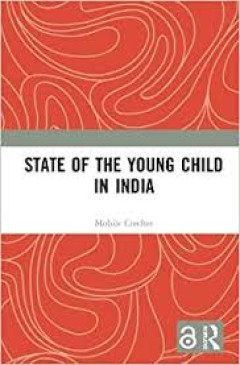
State of the young child in India
This Report is one of the first comprehensive studies on young children in India. It focuses on children under 6 years of age and presents key aspects of their well-being and development. It introduces two young child indices aggregating selected indicators to separately track child outcomes and child circumstances and provides an account of the current situation of the young child in terms of …
- Edisi
- -
- ISBN/ISSN
- 9781003026488
- Deskripsi Fisik
- 332 p.; 22 cm.
- Judul Seri
- -
- No. Panggil
- 305.230954 STA s

Environment in the lives of children and families:perspectives from India and…
Epdf available Open Access under CC-BY licence. Based on involved creative, qualitative work with families in India and the UK who live in different contexts, this book illuminates how environmental practices are negotiated within families, and how they relate to values, identities, and society. It contributes to understanding of the ways in which families and childhood are constructed as sites…
- Edisi
- -
- ISBN/ISSN
- 9781447339236
- Deskripsi Fisik
- 184 p.; 22 cm.
- Judul Seri
- -
- No. Panggil
- 305.23 ENV e
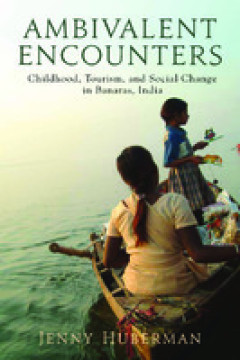
Ambivalent encounters :childhood, tourism, and social change in Banaras, India
Jenny Huberman provides an ethnographic study of encounters between western tourists and the children who work as unlicensed peddlers and guides along the riverfront city of Banaras, India. She examines how and why these children elicit such powerful reactions from western tourists and locals in their community as well as how the children themselves experience their work and render it meaningfu…
- Edisi
- -
- ISBN/ISSN
- 9780813554082
- Deskripsi Fisik
- -
- Judul Seri
- -
- No. Panggil
- 331.318 HUB a

Ambivalent encounters :childhood, tourism, and social change in Banaras, India
Jenny Huberman provides an ethnographic study of encounters between western tourists and the children who work as unlicensed peddlers and guides along the riverfront city of Banaras, India. She examines how and why these children elicit such powerful reactions from western tourists and locals in their community as well as how the children themselves experience their work and render it meaningfu…
- Edisi
- -
- ISBN/ISSN
- 9780813554082
- Deskripsi Fisik
- -
- Judul Seri
- -
- No. Panggil
- 331.318 HUB a
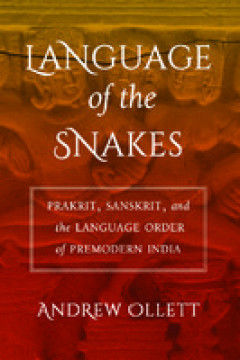
Language of the snakes :prakrit, Sanskrit, and the language order of premoder…
Language of the Snakes traces the history of the Prakrit language as a literary phenomenon, starting from its cultivation in courts of the Deccan in the first centuries of the common era. Although little studied today, Prakrit was an important vector of the kāvya movement and once joined Sanskrit at the apex of classical Indian literary culture. The opposition between Prakrit and Sanskrit was …
- Edisi
- -
- ISBN/ISSN
- 9780520968813
- Deskripsi Fisik
- 324 p.; 22 cm.
- Judul Seri
- -
- No. Panggil
- 891.3 OLL l
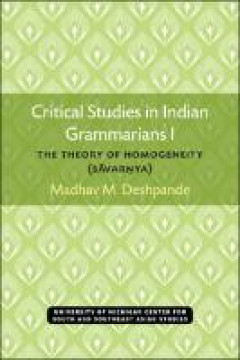
Critical studies in Indian grammarians I :the theory of homogeneity (Savarnya)
In the historical study of the Indian grammarian tradition, a line of demarcation can often be drawn between the conformity of a system with the well-known grammar of Pa?ini and the explanatory effectiveness of that system. One element of Pa?ini’s grammar that scholars have sometimes struggled to bring across this line of demarcation is the theory of homogeneity, or savar?ya, which concerns t…
- Edisi
- -
- ISBN/ISSN
- 9780472901708
- Deskripsi Fisik
- XIII, 224 p.
- Judul Seri
- -
- No. Panggil
- 491.4 DES c

Indian literature and the world :multilingualism, translation, and the public…
Moves beyond restrictive Anglocentric approaches Features contributions from a spectrum of academics, from early career researchers to key names in the fieldAddresses areas such as translation studies as well as postcolonial studies and world literature
- Edisi
- -
- ISBN/ISSN
- 9781137545497
- Deskripsi Fisik
- 288 p.; 23 cm.
- Judul Seri
- -
- No. Panggil
- 891.4
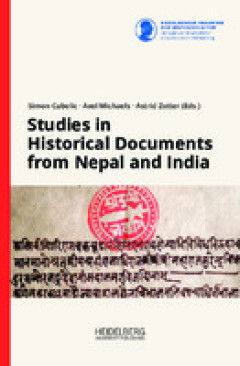
Studies in historical documents from Nepal and India
This volume is the outcome of the conference “Studying Documents in Premodern South Asia and Beyond: Problems and Perspective”, held in October 2015 in Heidelberg. In bringing together experts from different fields—including Indology, Tibetology, History, Anthropology, Religious Studies, and Digital Humanties—it aims at exploring and rethinking issues of diplomatics and typology, the pl…
- Edisi
- -
- ISBN/ISSN
- 9783946054702
- Deskripsi Fisik
- XI, 535 p.
- Judul Seri
- -
- No. Panggil
- 954.96 STU s
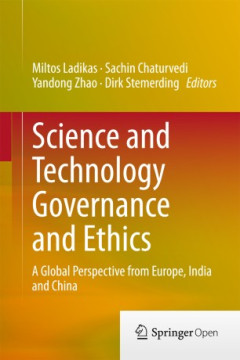
Science and technology governance and ethics :a global perspective from Europ…
This book analyzes the possibilities for effective global governance of science in Europe, India and China. Authors from the three regions join forces to explore how ethical concerns over new technologies can be incorporated into global science and technology policies. The first chapter introduces the topic, offering a global perspective on embedding ethics in science and technology policy. Cha…
- Edisi
- -
- ISBN/ISSN
- 9783319146935
- Deskripsi Fisik
- viii, 173p. : ill.
- Judul Seri
- -
- No. Panggil
- 509 MIL s
 Karya Umum
Karya Umum  Filsafat
Filsafat  Agama
Agama  Ilmu-ilmu Sosial
Ilmu-ilmu Sosial  Bahasa
Bahasa  Ilmu-ilmu Murni
Ilmu-ilmu Murni  Ilmu-ilmu Terapan
Ilmu-ilmu Terapan  Kesenian, Hiburan, dan Olahraga
Kesenian, Hiburan, dan Olahraga  Kesusastraan
Kesusastraan  Geografi dan Sejarah
Geografi dan Sejarah